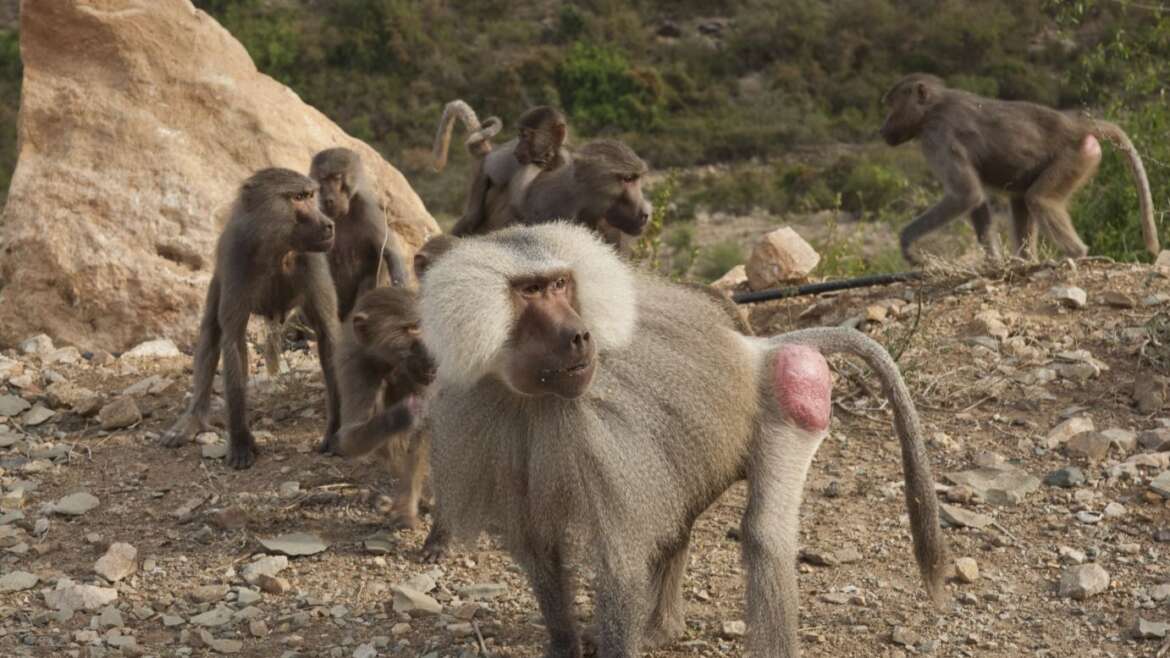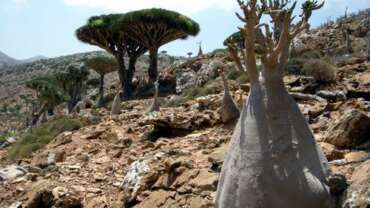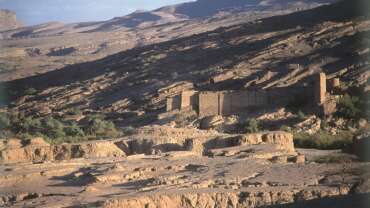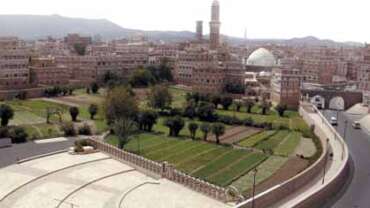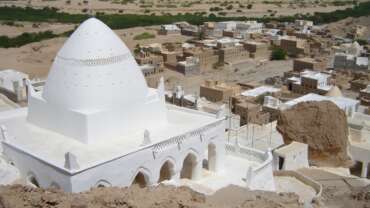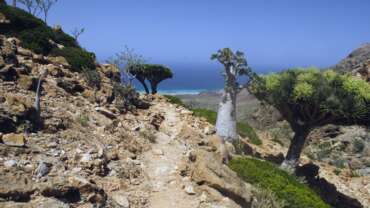Echo & Natural Tourism in Yemen
Jabal Bura
Inland to the east of Hodeida lies a remarkable relic of a past age, one of the last vestiges of extensive subtropical forest in the Arabian peninsula.
The southwestern slopes of Jabal Bura (2.271 m) are clothed with acacia (A. asak) and myrrh trees, along some fifty species common in the narrow valleys of the lower escarpment, like Comberetum molle, Terminalia brownii, Trichilia emetica and Phoenix rectilinate ( a palm of the tropical lowlands).
In the western valley below, these give way to more revering forest species, among them Breonadia salicina (renowned for its timber), Pandanus odoratissimus (the screw pine, remarkable for its beautifully scented flowers) and, again, Terminalia brownie and Phoenix rectilinata.
The forest also contains a stunning fauna of migratory birds and butterflies, hyenas and large troops of baboons; leopards have been seen here quite recently. For fear of the wild beasts, the local people in these mountains insist that travelers may not bivouac outdoors at night and are generous with their hospitality.
On the dry mountain slopes of the foothills and lower escarpment there is the flowering bottle tree (Adenium obesum), with its swollen trunk. This is a member of the dogbane family which has developed into a weird succulent form.
Reeds are festooned with the nests of the gregarious Ruppell’s weaverbird. Long-legged hammerkops (Scopus umbretta), with their odd-looking head-crests, are more common here than elsewhere in the country and wade in the slow-moving water of the wadis searching for small aquatic invertebrates, often kicking or shuffling their feet to stir up the bottom.
These birds build remarkable half-ton communal roofed nests of mud and sticks, up to two meters high, in the forks of waterside trees.
Ibb Terraces
The highest annual rainfall in Yemen gives the district of Ibb its distinctive green terraces, which can be harvested up to four times a year. Fields of sorghum, and millet carpet the landscape of this highly fertile region.
Ibb sits on a small hill by the western mountains; a typical Yemeni town which over the past fifteen years has exploded in size because of the productivity of the region of which it is the centre and its important position on the road between Taiz and Sana’a.
Ibb is like a necklace of pearls on a green carpet. Its rare nature covered with everlasting spring and vivid ever-greenness. Like its plains, its mountains are a dress of charming beauty which embroiders its rocks and the cracks of its stones. This makes Ibb seem to be in an incomparable beautiful sarcenet dress.
Ibb is the most diverse Yemeni province in terms of the excellent and unique tourist, environmental and archeological product.
Civilizations, chiefs, leaders and kings have been under the wings of this natural greenness. It is a transit for travelers who stay under its pleasant shades to take rest. Its shades provide them with new energy and vigor.
Desert
Away from the coast the center of Arabia is a vast area of gravel plain partially covered in sand dunes. The main sand desert in the eastern part of the peninsula, the Rub al-Khali ( the Empty Quarter), has a much smaller southern arm known as the Ramlat as-Sabatayn. It is 100km wide at its western end near the Yemen foothills, tapering to about 15km as it enters Wadi Hadramout.
It consists of chains of dunes or uruq (urq) which are roughly parallel, with a general east west orientation, separated by narrow flats of gravel, silt or gypsum locally called shuquq (shuq).
Some of the dune ridges can be as much as 50m high and they are often several kilometers long. Interdunal lakes once formed at the end of wadis flowing into the centre of the desert.
This has given rise to the strange phenomenon, visible when crossing the desert, of what appears to be seashells in the desert sand. They are not in fact seashells but part of a Quaternary molluscan fauna which inhabited the area. They are a combination of terrestrial and aquatic snail shells (gastropods).
The internal desert lakes dried up eventually with the onset of the present climatic regime between 4000 and 3000 BC, leaving their unfortunate residents somewhat high and dry.
Socotra
Socotra is one of Yemen’s greatest treasures of biodiversity. Located about 400km south of the mainland in the Indian Ocean, these arid islands play host to a stunning array of plant and animal life. An estimated 30% of the island chain’s plant life is endemic, as are many of the birds found there.
Socotra is an ecotourist’s dream – not all of the region’s animal species have been identified, and the waters surrounding the archipelago are relatively unexplored.
Flora: The plant life on Socotra is surprisingly diverse. There are over 900 known plant species on the island, a full 30% of which are endemic. Perhaps the most noteworthy of these is the dragon’s blood tree ( Dracaena cinnabari) The tree is so named for the bright red colour of its resin. The resin was a major export from the Island and a part of the spice trade of the region.
It was used as a varnish and dye, as an incense, and body oil. The dragon’s blood tree, which is identifiable by its unique umbrella shape, is found primarily in the mountain highlands of the island; these unique trees stand between 3m and 10m in height.
Also dwelling in the highlands are numerous shrubs, most prominently Rhus thyrsiflora, Cephalocroton soqotrans, and Allophylus rhoidiphyllus. Socotra aloes also occur in the higher altitudes.
At the foothills of the mountains of Socotra there is a rich shrub land. One of the most distinct plants in this area is the Socotra desert rose ( Adenium obesum ssp sokotranum).
This unique plant is also known as the “bottle tree” for its thick bottle-shape trunk. Other succulents in the area include the cucumber tree (Dendrosicyos socotrana) as well as both frankincense and myrrh.
Jatropha unicostata, which occurs on the lower slopes of the mountains, is prized for its medicinal uses.
On the plains and lowlands of the island the shrub Croton socotranus is the predominant flora. Also prevalent is the tree-euphorbia (Euphorbia arbuscula), which rises above the shorter shrubs.
Other plants of note are the Socotra begonia (Begonia Socotrana) and the Punica protopunica, a relative of the pomegranate, and the Persian violet (Exacum affine).



